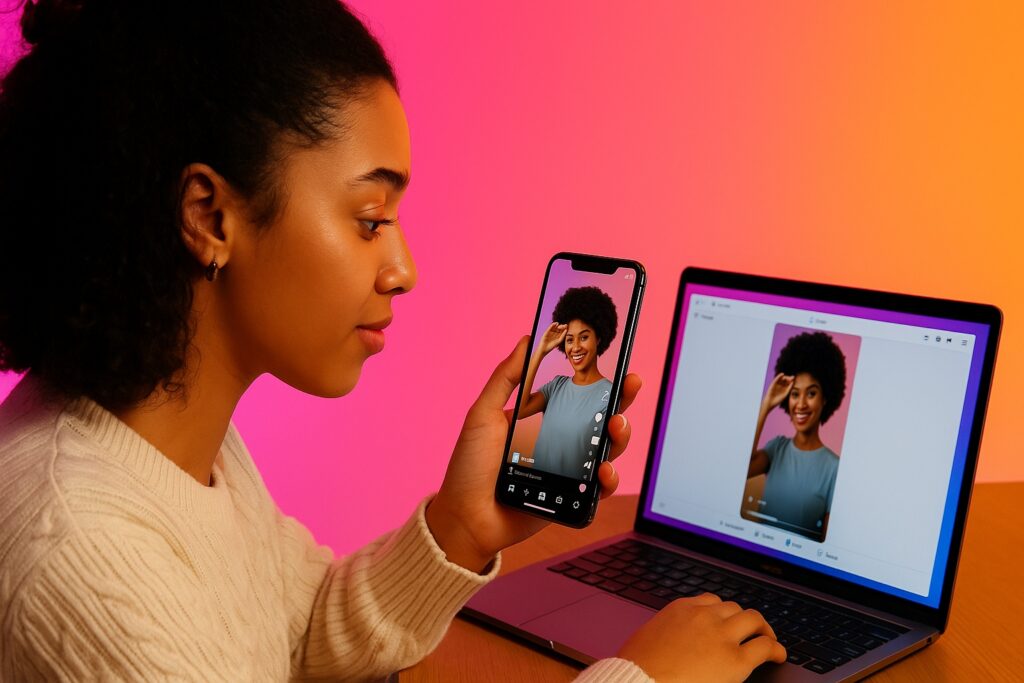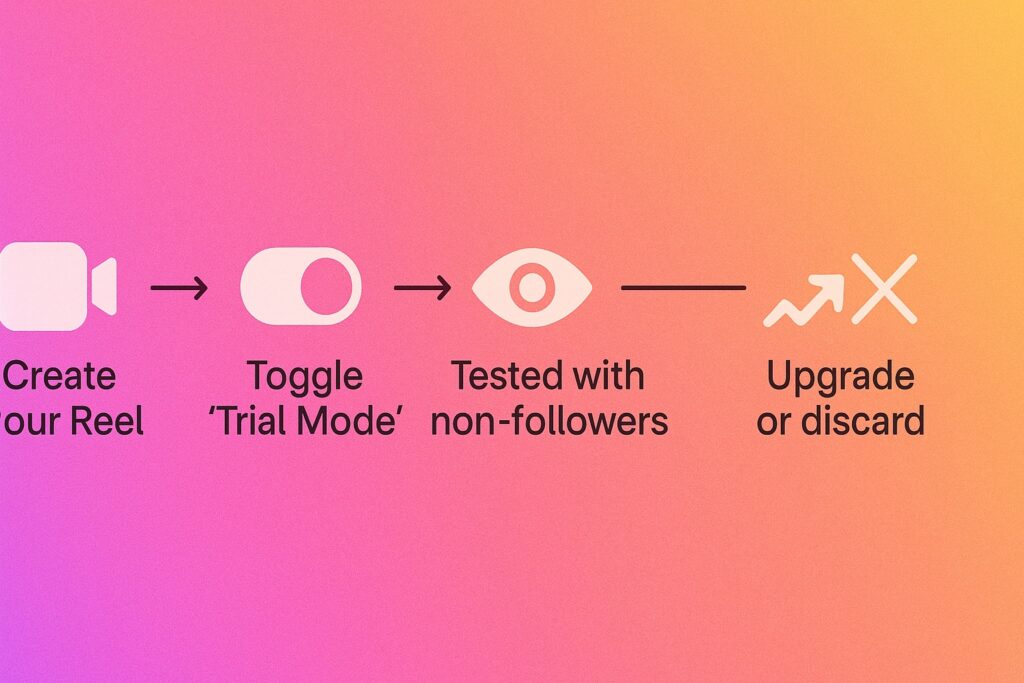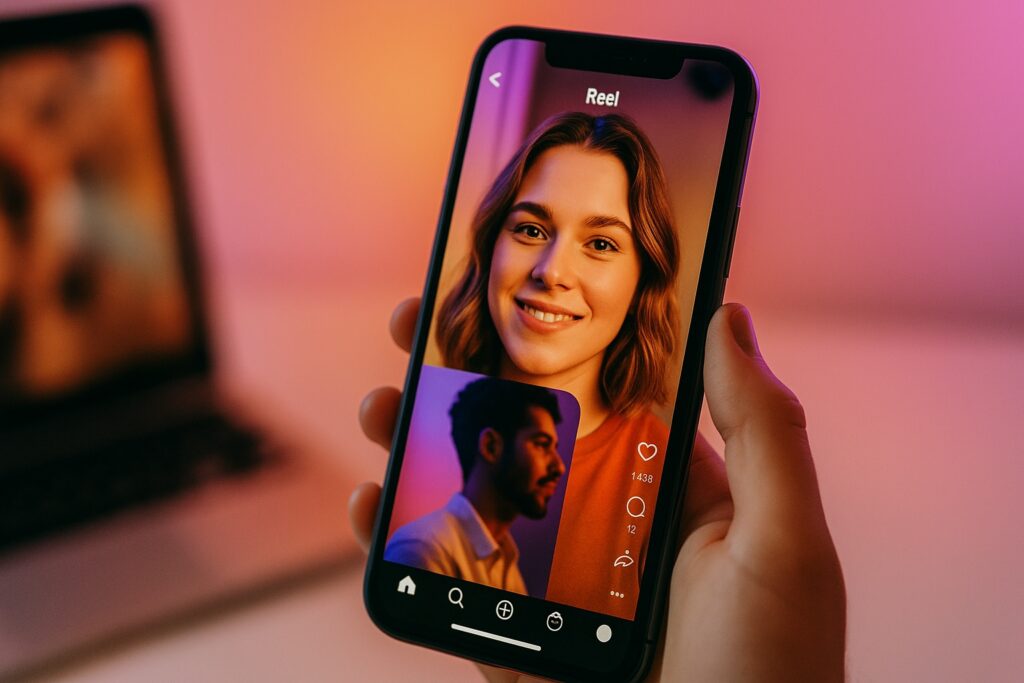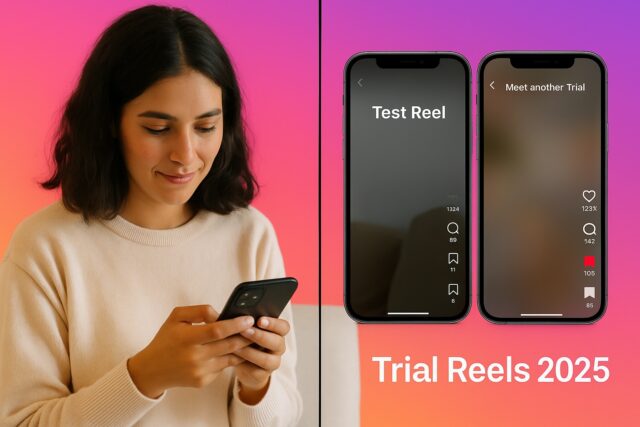Every creator knows the feeling of that quick rush of excitement mixed with dread just before tapping “Post.” You’ve spent hours filming, editing, choosing the perfect track, adjusting captions… but there’s always that whisper in the back of your head: What if it flops?
For years, that fear shaped how creators behaved on Instagram. People played it safe, avoided risky ideas, and over-edited videos all to protect their engagement rates. But in 2025, Instagram quietly introduced something that changed everything: Trial Reels.
Trial Reels are like a creative safety net, a testing ground where you can post your videos privately to a sample audience before showing them to your whole follower base.
By the way, if you want to stay connected and know everything about social commerce and never miss a beat, join Logie today! Click here
Think of it as your personal algorithmic sandbox: a place to experiment, A/B test ideas, and refine your best work without worrying about hurting your stats or feed aesthetic.
And thanks to a significant 2025 update, this tool isn’t just for prominent creators anymore. As of July 2025, any public account with 1,000 or more followers can use Trial Reels.
That means most active creators and brands now have access to one of Instagram’s most powerful new growth tools, one that rewards curiosity and creativity over perfection.
What’s New in 2025
In mid-2025, Instagram officially expanded Trial Reels access to a broader creator base. Anyone with a public account and 1,000+ followers can now activate the feature directly within the Reels composer.

This change moves Trial Reels from a quiet experiment to a mainstream creator tool. No more waiting for special access. If you’re building your brand, you can start testing Reels today.
Metricool’s October 2025 report also confirmed the rollout, noting that the feature is now integrated across most regions and is meant to “reduce creative pressure and improve content performance through testing.”
So what does that mean for you?
More creators will now be testing their content before publishing, which also means the competition for attention just got smarter. But for those who use Trial Reels well, it’s a game-changing advantage.
What Are Trial Reels?
Trial Reels let you upload a Reel to Instagram without immediately publishing it to your followers. Instead, Instagram shows it to a small pool of non-followers to gauge how well it performs.
Here’s how it works in plain terms:
- You create and edit your Reel as usual.
- Before publishing, you toggle on Trial Mode under advanced settings.
- Instagram quietly tests it with non-followers through Reels and Explore feeds.
- You watch how it performs completion rate, shares, saves, and comments.
- If it’s strong, you can promote it to your followers or let Instagram auto-publish it.
If it doesn’t perform? You can delete it or refine it. There’s no penalty, no embarrassing low-view Reel sitting on your profile grid, and no hit to your algorithmic credibility.
“So, basically what it does when you do a trial is it doesn’t push it out to all of your followers. It will push it out and see if it will gain traction… It’s a way of testing your Reels to see if the content needs adjusting.” Magan M. Hunt
That’s the heart of it: freedom to experiment without fear.
How It Works
1. Create your Reel
Film, edit, and caption your video as you usually would.

2. Flip on the “Trial” toggle
In 2025, most eligible accounts will now see this switch before posting. Toggle it on to start a test.
3. Instagram runs a quiet test
Your video goes to non-followers through Reels or Explore but won’t appear on your profile grid or in your followers’ feeds.
4. Monitor your metrics
After about 12–24 hours, you’ll see real engagement data, views, saves, watch time, and comments. Pay attention to completion rate, saves, and shares, not just raw views.
5. Decide your next move
If the Reel performs well, publish it publicly or let Instagram auto-share it. If not, scrap or rework it privately. No algorithmic punishment.
How Trial Reels Help You Win the Algorithm
Instagram’s algorithm rewards content that holds attention and drives interaction. But a few weak Reels can lower your overall visibility. Trial Reels protect you from that by filtering out the underperformers before they reach your followers.
Here’s what that means for your content strategy:
- Protects your engagement average: Only proven Reels reach your main feed.
- Boosts creative confidence: You can test bold ideas with zero risk.
- Feeds the algorithm better data: Instagram sees what people love and rewards you for it.
It’s not “gaming the system,” it’s learning to play smarter.
How Creators Are Using Trial Reels in 2025
Now that access is widespread, creators and brands are using Trial Reels in surprisingly clever ways:

🔹 A/B Testing Hooks
Creators are uploading two or three versions of the same concept, changing only the first three seconds, caption style, or background audio, and seeing which keeps viewers watching longer.
🔹 Reposting “Best Of” Content
Old Reels that went viral? They’re getting a second life as Trial Reels with new edits or captions, allowing creators to revive proven hits without repeating themselves.
🔹 Exploring New Niches
Want to branch from fashion into home decor or from tutorials into lifestyle content? Run a few Trial Reels to test interest before you pivot publicly.
🔹 Product & Affiliate Testing
For e-commerce and Amazon influencers, this is a considerable edge. Test different product angles, CTAs, or thumbnail styles, and find the combo that drives conversions before you launch your campaign.
🔹 Keeping the Feed Clean
Trial Reels help you maintain a curated, high-performing feed — a subtle but powerful signal to Instagram’s ranking systems.
How to Build a Smart Trial Reel Strategy
With broader access in 2025, every creator can benefit from a bit of structure.
Step 1: Start with a question
“What kind of hook keeps people watching?” “Which caption drives more saves?” Focus on one variable at a time.
Step 2: Create 2–3 versions
Use slight variations of different opening lines, sounds, or visual pacing and upload them as separate Trial Reels.

Step 3: Give them time
Let them run for at least 24 hours before judging. Reels distribution ramps up in waves.
Step 4: Track what matters
Don’t obsess over views. Instead, track:
- Watch-through rate
- Saves per 1,000 views
- Shares per 1,000 views
- Comments per 1,000 views
Step 5: Upgrade your winners
Promote your best performers to your followers or use them as paid ad creatives. They’re proven hits.
A Few Things to Keep in Mind
Even though Trial Reels are powerful, they come with a few reminders:
- Cold audience ≠ , core audience: What works for strangers might not always click with loyal fans.
- Don’t overuse them: Some posts, like community updates or personal moments, are better shared directly.
- Stay authentic: Testing should guide you, not control you. Don’t lose your voice chasing what performs best.
- Be patient: Metrics take time to settle; give your Trial Reels at least a day before judging results.
The Future Belongs to Creators Who Test
The social media game has changed. In 2025, success isn’t about posting the most; it’s about posting the smartest.
Trial Reels mark a shift from guesswork to growth. They turn your Reels strategy into a science experiment, one where every post teaches you something new.
They also represent something bigger: the freedom to retake risks. The freedom to be creative, playful, and bold without worrying that a single low-performing video will wreck your reach.
Whether you’re an Amazon influencer, a growing brand, or a content creator finding your voice, Trial Reels help you move with intention.
You can test, refine, and build an audience that trusts your creativity because what they see has already been tested to resonate.
In short, the future of Instagram belongs to creators who test. So start experimenting. Your next viral hit might already be sitting in your drafts, waiting for its trial run.










